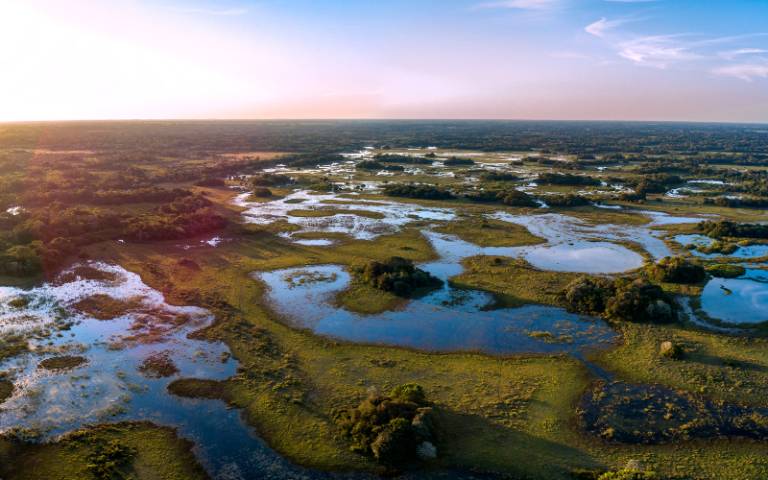The Pantanal region of Brazil is a rare place, home to vast herds of commercial cattle living sustainably alongside healthy populations of endangered species. However, researchers from UCL found that this harmony is under threat from changing land use and encroaching development.

In a new paper, published in Conservation Science and Practice, Dr Rafael Chiaravalloti (UCL Anthropology) and his team travelled to the region documenting the potential for protecting the region's biodiversity alongside its cattle production, and the risks it faces. He sees the cattle ranching practices in the region as a tool for conservation.
The remote region encompasses both the world's largest tropical wetland and the largest flooded grasslands, named a UNESCO World Heritage site. About the size of Nepal, and larger than England, it covers about 140,000 square kilometres of southwest Brazil in the state of Mato Grosso do Sul, and also crosses into Bolivia and Paraguay.
For generations, the region's cattle ranchers have practiced a form of low-impact, low-intensity livestock farming, protecting the natural environment and biodiversity of the region. As a result, though the Pantanal is home to about 3,000 cattle ranges covering 90% of the region, producing more than 3.8 million individual heads of cattle per year, it's also one of the most conserved wetlands in the world. More than 80% of its native vegetation remains, alongside animals such as jaguar, marsh deer, white-lipped peccaries and jabiru. Though these species are endangered elsewhere in Brazil, the Pantanal boasts healthy populations throughout the region.
However, recent developments in the region threaten to destabilise its ecological sustainability. Increasing deforestation, changing land use, the arrival of intensive livestock production, nearby infrastructure projects and ongoing climate change threaten the ecological health of the Pantanal.
Researchers from UCL visited the Pantanal and conducted extensive interviews with ranchers and managers throughout the region to better understand the challenges and concerns facing the region's residents. They found that there's widespread concern amongst the traditional Pantaneiro ranchers that new, intense agricultural practices will displace them and their low-impact methods of raising cattle.
In addition, growing concerns over uneven enforcement of environmental protection laws, poor monitoring of the region's biodiversity, little recognition of the rights of residents to organise, and emerging conflicting views on land use are more worrying signs that the Pantanal is in jeopardy.
But there is room for hope. The team found also strong property rights, the presence of low impact resource use strategies and engaged local communities are positive signs that the people living in the Pantanal are willing and able to protect its unique environment.
In addition, the change in presidential administrations has already had a significant impact on the region. Funding for federal agencies fighting deforestation that saw their budgets cut during the Bolsonaro administration have seen much of it restored under the Lula administration. A recent conference in the region brought hundreds of stakeholders together, and put sustainable ranching at the centre of its agenda. Newly proposed local legislation by the governor of Mato Grosso do Sul will also in principle guarantee its sustainable use.
Lead author Dr Rafael Chiaravalloti (UCL Anthropology) said: "The Pantanal is a unique place, home to an amazing array of wildlife living side-by-side with commercial cattle. In many ways, it can serve as a model of what sustainable ranching could be. But with storm clouds on the horizon, it's more important now to fully understand the threats facing this vast landscape."
Rafael has been working with the local residents for years and is able to put you in touch with residents and organisations in the Pantanal, including ranchers, land managers and owners, and local interest groups.






